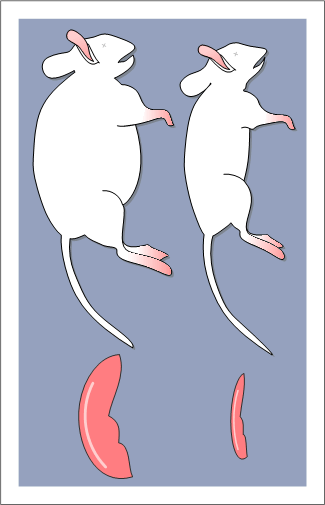Part One - Introduction
Over half of the presentations given at the Newcastle PBC Conference were discussions of the genetic, cellular and molecular mechanisms of PBC. These presentations were very technical, full of diagrams and long lists of interacting molecules. Even some of the doctors I spoke with admitted they did not understand the details of these presentations.
I am not going to pretend that I understood most of the details. (I was satisfied with being able to recognize the acronyms for some of the molecules.) However, I feel I can provide a high level summary of the issues and conclusions presented.
While a small proportion of genes are obviously involved in PBC, there was no consensus regarding all of the genes involved directly in PBC. Suffice it to say there are many genes (tens of them, maybe even hundreds) each producing a different protein.
Within the set of known and suspected genes implicated in PBC, changes occur in the proteins they produce. Some proteins are "upregulated", meaning they appear in greater concentration than normally observed in healthy individuals, while others are "downregulated", meaning they appear in lesser concentration.
Further complicating matters is evidence that early and late stages of PBC exhibit differences in the up/downregulation of these proteins. Comparisons are also hampered by differences observed between groups of patients from different regions of the world.
Interactions between upregulated and downregulated proteins are complicated, even if one only considers the quantity of proteins involved and the possible permutations and combinations. However, these proteins also act upon each other; thus some are present as a result of the actions of others. In other words, there are many simultaneous processes where these proteins interact and affect other processes.
Part Two - Issues
Below is a partial list of issues impeding the progress of PBC research:
- The factors that predispose a person to develop PBC, including the reason for the preponderance of women with the disease, are suspected but remain unconfirmed.
- The triggers of PBC remain unknown, thus it is not possible to conclusively determine whether the observed upregulated/downregulated components are causing disease or resulting from disease.
- The latency ("long dormant period of time") between the development of AMAs and symptoms of PBC suggests that characteristics observed by the time the disease is present are probably results of the disease, not indicators of the cause.
- Additional confusion is the enigma of AMA-negative PBC, which appears to have a different path but culminates in the same disease.
- PBC patients studied in different parts of the world had similar up/downregulated proteins within regional groups, but differences were observed when these groups were compared. Are these differences due to ancestry and/or environment?
- Differences observed in the proteins that are up/downregulated in early stage disease versus late stage disease in PBC patients has the appearance of two different diseases. Does this mean that additional triggers/events are necessary for the disease to progress to later stages and/or are only some people are susceptible to developing late-stage disease?
Part Three - Animal Models
 The mouse on the left suffered from a PBC-like induced condition and had developed an enlarged liver and ascites. The mouse on the right is a healthy control. |
Researchers cannot study the mechanisms in action on live PBC patients. Cradle-to-grave studies (induction of disease to death) obviously cannot be conducted on people. Therefore, this sort of research must rely on animal models. Several scientists presented their findings from studies of lab animals, but these have limitations. Most often the animal models are mice which have been genetically engineered to be susceptible to liver disease. Eventually these animals die from their PBC-like conditions so that the entire animal can be studied for the effects of disease. Animal models limit researchers' ability to draw conclusions about PBC for a variety of reasons, including:
Researchers must be careful in their conclusions due to the obvious differences between mice and people. Are these differences due to the differences between mice and people, or are they due to the differences in these PBC-like induced diseases and PBC, or, are the differences due to both? |
Part Four - Conclusions
The molecular and genetic issues present in PBC are many and incredibly complicated. Much work remains to be done just to settle on the most likely genes involved. The long, unknown latency time from the development of the antibodies responsible for the development of PBC, coupled with the mystery of the triggering agents, further muddies the investigation for root causes.
I believe researchers have years of work ahead of them unraveling the myriad genetic issues involved in PBC. Lack of knowledge of the roots of autoimmunity and the triggers of PBC, as well as animal models that sufficiently mimic PBC, hinders scientists' efforts to draw conclusions from their work. In the meantime, we will need to be patient while we support genetic research.
Many thanks to:
Jeannette Ehrlich, who assisted with proofreading, editing and rewording.Michael Sowers, who provided technical assistance and corrections.